On the second new moon after December’s winter solstice, families gather to usher in the auspicious Lunar New Year with a flurry of traditions: festive cakes, lion dances, lai see exchanges, heartfelt wishes for elders, and so much more. It’s a celebration brimming with culture, joy, and togetherness. Ready to brush up on the essential Chinese New Year traditions? This ultimate guide has you covered – just in time for CNY 2025, which begins on 29 January!
Read More: Soup’s On! 23 Hong Kong Hot Pot Restaurants You’ll Keep Coming Back To
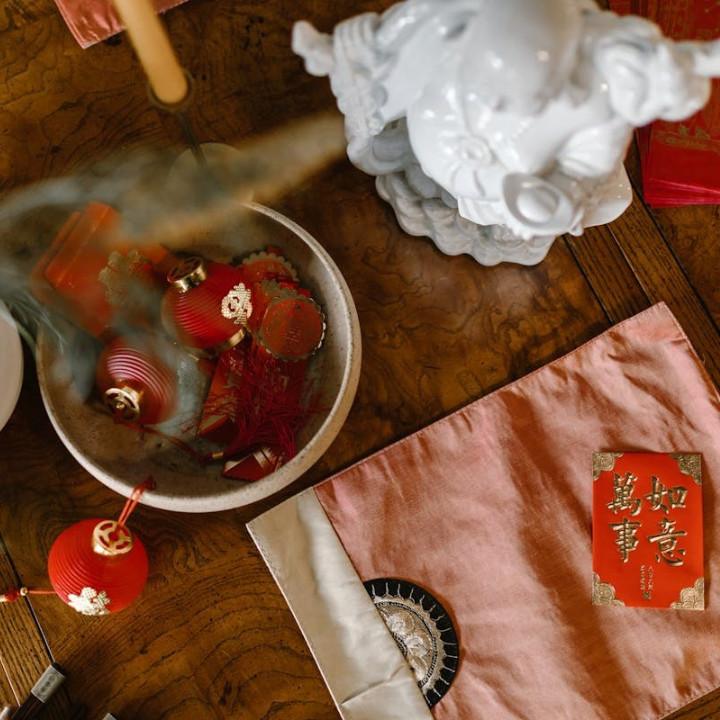
Preparing For The New Year
Before the festivities kick off, a series of preparatory rituals take priority, all designed to ensure you step into the new year with a clean slate. The goal? Clear out the clutter – both physical and symbolic – and create space for renewal, abundance, and positivity.

Spring Cleaning: Make Room For Blessings
If you want luck to flow in, you’ve got to clear the way! Pre-CNY spring cleaning is all about creating space for good fortune. Every corner gets a refresh – sweeping away dust, bad luck, and negative vibes. Shelves are dusted, furniture is rearranged, and homes sparkle with a sense of renewal.
Friday Clubbers Tip: Wrap up your cleaning before the first day of the new year! Tradition holds that tidying up during CNY could accidentally sweep away your incoming luck. Lock it in early and let good wishes settle in.
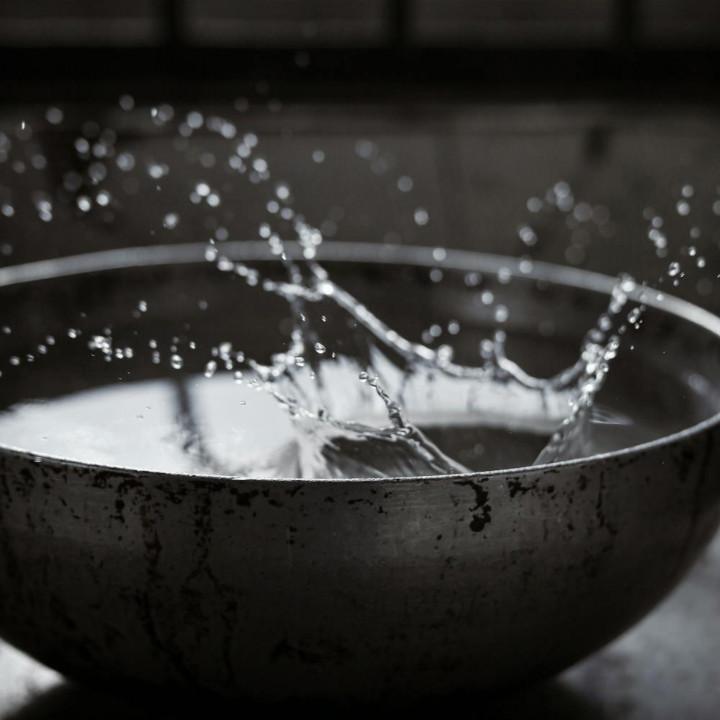
Bathing In Pomelo Leaves
One treasured Chinese New Year tradition involves bathing in pomelo leaves. The leaves are boiled to create a fragrant infusion, which is then used to rinse the body – a symbolic act believed to cleanse away misfortune. Once again, this is Chinese wordplay at play. Fun fact: the use of pomelo leaves is a clever nod to language. The word for pomelo, 柚, sounds like 佑, which means protection. Feeling indulgent? Elevate this custom by adding fresh flowers or a few drops of essential oil for a luxurious take.

New Year, New Threads!
Once your home (and your spirit) feels refreshed, it’s time to shop for all things new! New clothes are a symbol of new beginnings, inviting fortune into your life. Bright, auspicious colours like red, gold, and pink reign supreme in Lunar New Year wardrobes, setting the tone for a lucky year ahead. But don’t stop at clothes – stock up on fruits, vegetables, and festive snacks to fill your home with abundance. These treats also double as perfect gifts for visiting family and friends. Ever wondered why oranges and tangerines are everywhere during Chinese New Year? It’s all about symbolism: their golden hue represents wealth, making them a must-have for the season.
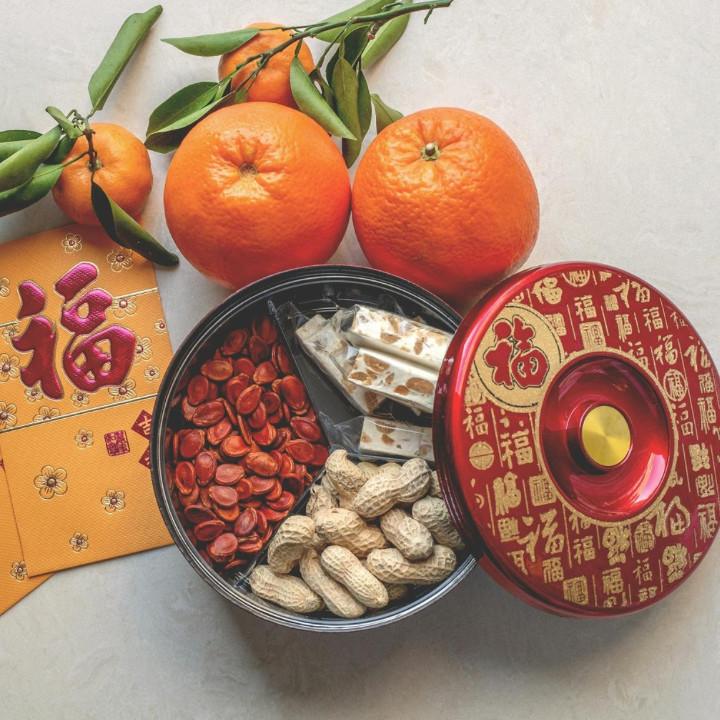
The Auspicious Snack Box: Chuen Hap
You know it’s Chinese New Year when a Chuen Hap – a box of assorted sweets – graces every dining table. Typically round or octagonal, this festive box is filled with treats that represent good luck and the sweetness of life. Traditional fillings include candied lotus seeds for fertility, red melon seeds for joy, dried coconut strips for unity, and sugared winter melon for good health. Modern favourites often make an appearance too, such as assorted chocolates, nuts, and bite-sized biscuits. Planning to assemble your own? Make sure to stock up generously – guests will happily nibble their way through, keeping this cherished tradition alive!
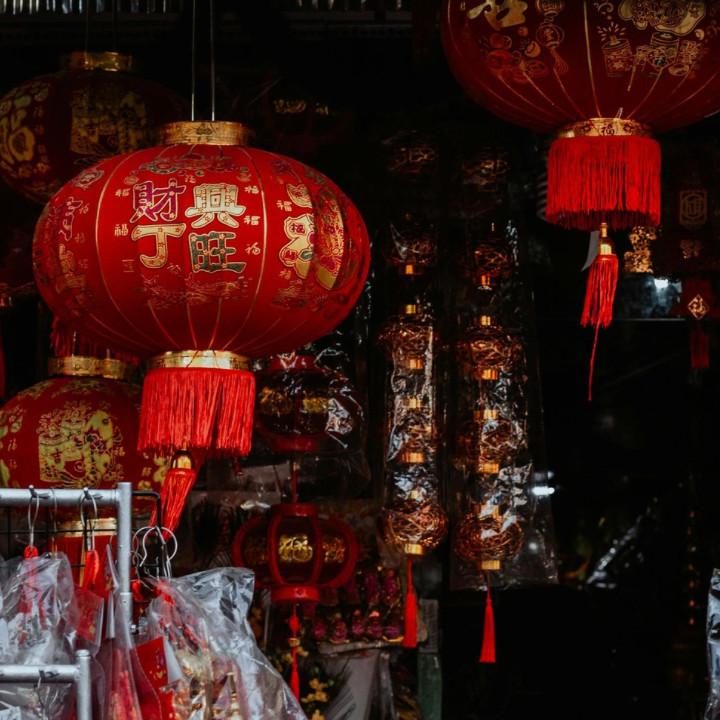
Paint The House Red (And Gold!)
Lucky colours take pride of place during Chinese New Year, with homes and shops awash in red and gold – symbols of fulfilment and good luck. Look out for the character 福 (luck), often placed upside down as a playful homophonic pun on the words for ‘arrived’ (到) and ‘to turn upside down’ (倒), signifying that blessings have arrived. Adorning doorways, festive couplets (對聯) written on red scrolls bring wishes of happiness and plenty to all who pass through.
Flowers also hold special significance in the festivities. Orchids, daffodils, and chrysanthemums bring elegance and vitality, while red lilies are treasured for their bold colour and sweet scent. And if you spot blooming narcissus bulbs, it’s an especially auspicious sign of good tidings and success – particularly when they bloom on the very first day of the Lunar New Year!

A Grand Family Reunion For A New Year’s Feast
Food lies at the heart of Lunar New Year celebrations, bringing families together for a sumptuous feast. Each dish tells a story of tradition and hope for the year ahead. Take Longevity Noodles, for example – long, uncut Yi Mein noodles, often stir-fried, symbolise a wish for a long and healthy life. Then there’s the whole steamed fish, its wholeness representing completeness and harmony.
No festive table would be complete without cakes. From savoury turnip cake to sweet sticky rice cake, these treats carry rich meaning. The Cantonese word for sticky rice cake, nin gou, sounds like ‘higher year’, making it a delicious nod to growth. Even humble congee takes on special significance, symbolising achievements – a reminder that even the simplest dishes can hold the deepest blessings.
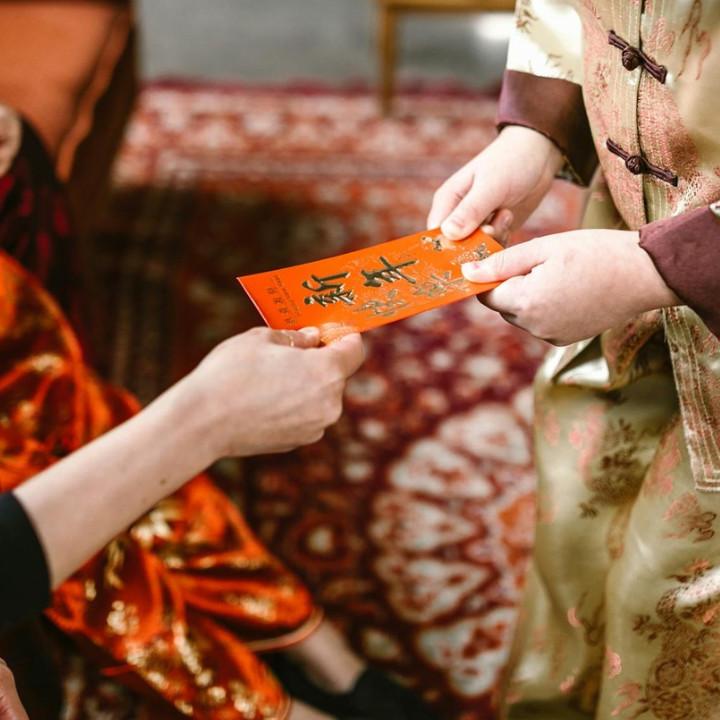
Red Packets, Lai See, Hong Bao
A hallmark of Chinese New Year, red packets – known as lai see in Cantonese or hong bao in Mandarin – are much more than envelopes filled with money. They symbolise blessings of health, happiness, and success for the year ahead. Traditionally, married couples and elders distribute these tokens of good fortune to younger family members and unmarried friends, spreading joy as the new year unfolds.
When giving lai see, etiquette is key. Avoid amounts with the number four, as it sounds like ‘death’ in Chinese, and instead opt for lucky numbers like eight. Always use crisp, fresh notes rather than worn ones, and exchange red packets with both hands to show respect. While modern designs come in all colours, red and gold remain classic choices, symbolising protection from misfortune. This timeless tradition is more than just a festive ritual – it’s a meaningful way to build connections. So, stock up on those red envelopes, embrace the spirit of generosity, and spread bliss this Chinese New Year!
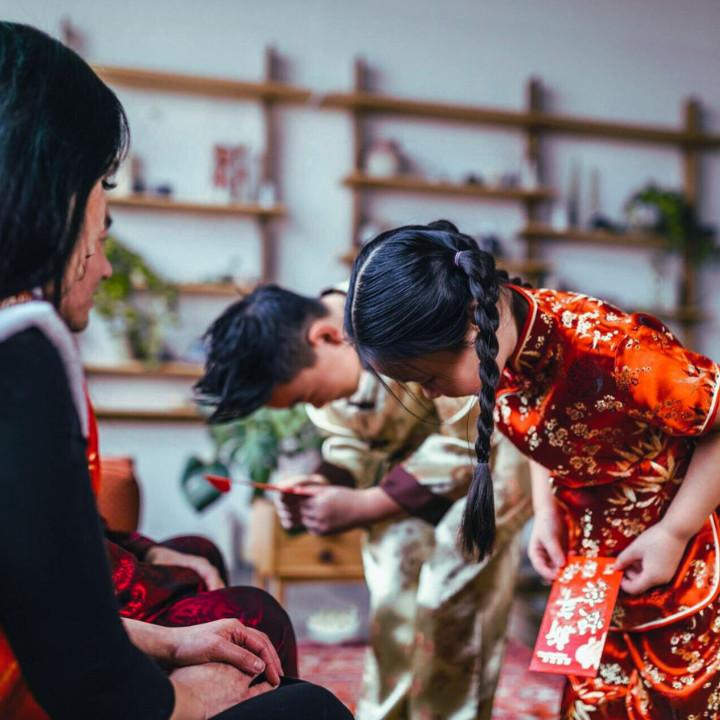
Count Your Blessings!
- For Wealth And Success: 恭喜發財 (Gung Hei Faat Choi) – Congratulations on your blooming prosperity! This iconic greeting assumes riches have already arrived – because manifesting affluence is the perfect way to start the year.
大吉大利 (Dai Gut Dai Lei) – Wishing you great fortune and growth. Fun fact: the word for ‘fortune’ sounds like ‘tangerine’ in Chinese, which is why tangerines are a must-have during the festive season! - For Health: 身體健康 (Sun Tai Geen Hong) – Wishing you good health. Literally translates to ‘body healthy’. A timeless classic that’s perfect for everyone, especially as we gear up to tackle the seasonal flu.
- For Overall Happiness: 萬事如意 (Maan See Yu Yee) – May all things go as you desire! A versatile phrase that brings radiance to any conversation.

Rachel Tang
Rachel Tang is the Social Media Manager and a contributing writer at Friday Club., where she combines her expertise in PR and Marketing with a passion for storytelling. She began writing for a media platform early in her career, which sparked a love for storytelling that still drives her work today. With a deep passion for fashion, music, and all things pretty, Rachel is always on the lookout for the next best thing – and she’s quick to rave about it to those around her.



